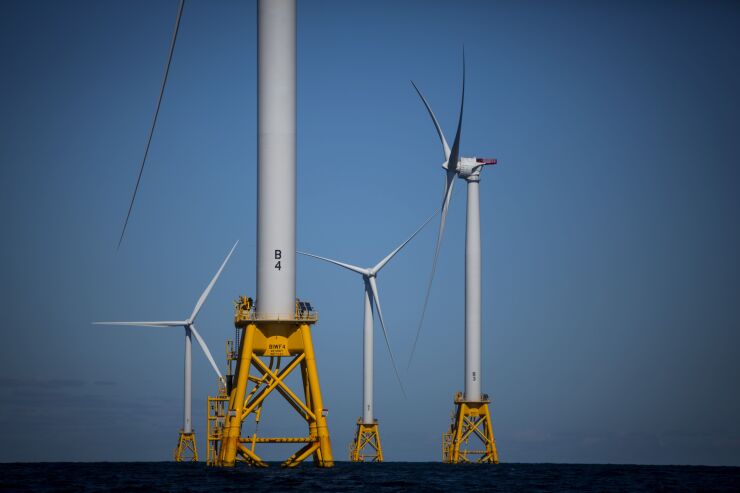Maine is one step closer to realizing ambitions of a native offshore wind energy industry.
The federal Bureau of Ocean Management on Thursday announced the findings of a study carried out in conjunction with the National Oceanic and Atmospheric Administration identifying 3.5 million square acres in the Gulf of Maine they believe to be suitable for the development of offshore wind energy platforms.
Due to its deep waters, the Gulf of Maine afforded “significant opportunities” for offshore wind development, and BOEM said officials would now prioritize “a robust and transparent planning process,” taking into possible environmental impacts and public opinion, in moving forward.
Bloomberg News
“BOEM strives to minimize potential impacts and will continue working hard to finalize offshore areas that have strong resource potential and the fewest environmental and user conflicts,” BOEM Director Elizabeth Klein said in a statement.
It is news state authorities, keen to quickly develop Maine’s wind energy potential and keep pace with regional rivals, have been waiting for.
The area identified in the study, lying 23 to 125 miles off of the coasts of Maine, Massachusetts, and New Hampshire, holds the potential to produce more power than the current offshore wind planning goals of all the Gulf of Maine states combined, the report said.
With the longest shoreline of the three, Maine stands to gain a major boost to its carbon net-zero plans if BOEM’s findings remain uncontested.
Maine Gov. Janet Mills has hoped to leverage offshore wind’s potential to meet long-term power goals, pushing in recent years for the aggressive development of a local industry capable of providing both power production potential and economic benefit.
She launched her long-term initiative, the Maine Offshore Wind Roadmap, in 2019, calling for Maine’s first operational offshore platform by 2030.
While the recent announcement from BOEM opens the door for local authorities to begin charting out the first leg of that development, they will face stiff competition, both regionally and nationally, in an evolving industry.
Along with being a step behind New York, New Jersey, and other regional rivals with major projects already underway, the quick pickup in interest in offshore wind energy, driven in part by a wide offering of federal and local incentives, has made any projects much pricier.
Costs are on the rise for offshore wind energy development, exacerbated by inflation, resulting in the cancellation or scaling down of several major projects across the county.
In response to cost increases, Massachusetts, Connecticut, and Rhode Island recently announced a tri-state initiative to jointly develop offshore wind potential in the hopes of bucking cost trends and remaining ahead of regional and national competition.
The findings of the Gulf of Maine study are now open to a 30-day public comment window over which the BOEM, federal and state officials, and other relevant parties will discuss the steps needed now to move forward.
